Vincent Massi posted:
Those 1:32 Occre locomotive kits are pretty: here's the Russian C68.

|




|
The Russians actually did some real innovating. The first locomotive test facility was built in Russia in the 1880s almost 25 years before the vaunted Pennsy built theirs.
And of course, the Russians invented the 4-4-0.
Kent Loudon posted:And of course, the Russians invented the 4-4-0.
Don't you mean "inwented"?
![]()
palallin posted:Kent Loudon posted:And of course, the Russians invented the 4-4-0.
Don't you mean "inwented"?
Da, Comrade!
No! And I have someone who agrees with me!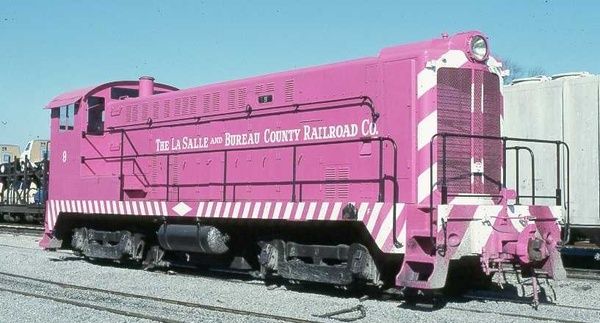 22222222222222
22222222222222
Yes, if it comes with an all-girl crew!
Back on pages 3 and 4 of this thread some observations were made concerning the CB&Q's Aeolus. According to The Steamliners by Holland #4000 was unveiled at the CB&Q's West Burlington, Iowa shops on 11 April 1937. The name "Aeolus" is Greek for "the Keeper of the Winds". It was the winning entry in a name-that-locomotive contest sponsored by the Burlington Junior Chamber of Commerce. Mrs. Goldie Murray was the winner.
The American Flyer toy train #9915 is often said to be a model of the Aeolus but that isn't the case. Flyer first offered #9915 for sale in 1935 two years before the CB&Q engine and their engine was only cataloged for that single year. The 1935 catalog text concerning #9915 states "With railroad men, this basic design is gaining a tremendous following. In addition to the New York Central, the Milwaukee R.R. and the Baltimore & Ohio have produced locomotives of this character." In short, #9915 was a generic shrouded locomotive which tried to appeal to fans of a number of U.S. railroads. They failed.
Catalog Cut from 1935
#9915
Adriatic posted:Not a fan of the style, but of what's below the running boards. 😎 The look "Down Under" seems more appealing. I think the boiler lines accent better in lighter colors.
The Oz engines are narrow gauge and are of the 4-8-4 wheel arrangement so as to spread their weight across more axles to allow lower axle loadings. They are roughly in the performance class of a light pacific. The T1 look was no accident. They were deliberately styled to look like the Pennsy engines. Another class of Australian 4-8-4s wore a Daylight inspired paint scheme and skirts and were used to pull a named train called "The Overland". They were built as 4-8-2s but became 4-8-4s when a 4-wheel booster truck replaced the 2-wheel trailer.

Robert S. Butler posted:Back on pages 3 and 4 of this thread some observations were made concerning the CB&Q's Aeolus. According to The Steamliners by Holland #4000 was unveiled at the CB&Q's West Burlington, Iowa shops on 11 April 1937. The name "Aeolus" is Greek for "the Keeper of the Winds". It was the winning entry in a name-that-locomotive contest sponsored by the Burlington Junior Chamber of Commerce. Mrs. Goldie Murray was the winner.
The American Flyer toy train #9915 is often said to be a model of the Aeolus but that isn't the case. Flyer first offered #9915 for sale in 1935 two years before the CB&Q engine and their engine was only cataloged for that single year. The 1935 catalog text concerning #9915 states "With railroad men, this basic design is gaining a tremendous following. In addition to the New York Central, the Milwaukee R.R. and the Baltimore & Ohio have produced locomotives of this character." In short, #9915 was a generic shrouded locomotive which tried to appeal to fans of a number of U.S. railroads. They failed.
Catalog Cut from 1935
#9915
Poor "Aeolus" suffered the ignominious honor of being nicknamed "Big Alice the Goon" after a character in the "Popeye" comic strip.
Railroaders are a cruel lot.
The original "Alice the Goon".
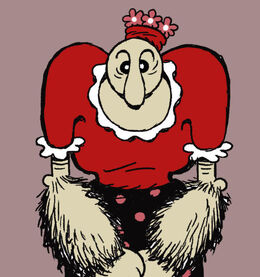
Note double catenary. What's the voltage ?
Hmm.. a post didn't take... I have part on my clip board maybe..yep..
I had heard "Alice", but didn't realize it was it was the ÆOLUS; nor the Oz-T1 was narrow gauge.
Not getting to see Australia/New Zealand with my own eyes is at the rim of my Bucket of Regrets. The road semi-truck road trains are something I wanted to check out too.
I used to love Alice & Jeep, but really just waited around for party-animal Poopdeck Pappy's crusty demeanor to steal the show.
Kent Loudon posted:And of course, the Russians invented the 4-4-0.
Where did you come up with that little bit of misinformation?
Friendly discussion, as well as courteous disagreement, is always welcome on my threads. According to Wikipedia "...the first 4-4-0 locomotive was designed by Henry R. Campbell, at the time the chief engineer for the Philadelphia, Germantown and Norristown Railway. Campbell received a patent for the design in February 1836 and soon set to work building the first 4-4-0.[1] "
It SEEMS that the British then invented a 4-4-0 a few years later.
Vincent Massi posted:Friendly discussion, as well as courteous disagreement, is always welcome on my threads. According to Wikipedia "...the first 4-4-0 locomotive was designed by Henry R. Campbell, at the time the chief engineer for the Philadelphia, Germantown and Norristown Railway. Campbell received a patent for the design in February 1836 and soon set to work building the first 4-4-0.[1] "
It SEEMS that the British then invented a 4-4-0 a few years later.
Vincent Massi posted:The terms "Camel," "Camelback," and "Mother Hubbard" are sometimes used interchangeably. They all refer to a locomotive with the cab in the middle, over the boiler. The idea behind this dangerous design was to put more weight in the driving wheels and give the engineer a better view.
The idea was to provide an extremely wide firebox, which would have blocked any forward view.
smd4 posted:Kent Loudon posted:And of course, the Russians invented the 4-4-0.
Where did you come up with that little bit of misinformation?
It's a joke, son; it's a joke (the Russians inwented everything first--just listen to Russian history as related by Pavel Chekhov).
Vincent Massi posted:The terms "Camel," "Camelback," and "Mother Hubbard" are sometimes used interchangeably.
This isn't accurate. The term "Camel" refers to a specific type of locomotive--the Winans Camel.
From Wikipedia:
"The camel and the camelback design were developed separately by two different railroads in different eras. Though the name is often incorrectly used interchangeably, they had little in common other than the placement of the cab. Unlike the later Camelbacks, Camels had cabs that rode atop the boiler. Ross Winans wanted to put as much weight on the driving wheels as possible to increase traction. Camelbacks have a cab that straddles the boiler. While Camelbacks have the same idea of moving the cab forward, they had it for different reasons. Camelbacks were developed to allow for the use of larger fireboxes, such as the Wootten, which would obstruct the engineer's view from a conventionally placed cab."
Right you are, Steve. It is inaccurate to use the terms "Camel," Camelback," and "Mother Hubbard" interchangeably.
Vincent Massi posted:Right you are, Steve. It is inaccurate to use the terms "Camel," Camelback," and "Mother Hubbard" interchangeably.
"Camelback" and "Mother Hubbard" used interchangeably are fine; "Camel" is a different beast entirely.
Vincent Massi posted:
This one is actually an older K-Line car out of the box (my picture). K-Line had 2 Hanukkah Box Cars, Lionel has one that came out last year, and Lionel has a Mogen David Jewish Wine Vat Car. ![]()
The phrase "Mother Hubbard" was usually used for locos whose cab sat completely on top of the boiler but did not straddle the boiler's sides. The first photo was the largest loco in the world at the time. It was primarily designed as a "pusher" in steep mountain areas and could not surpass 30 mph. The second is a track inspector.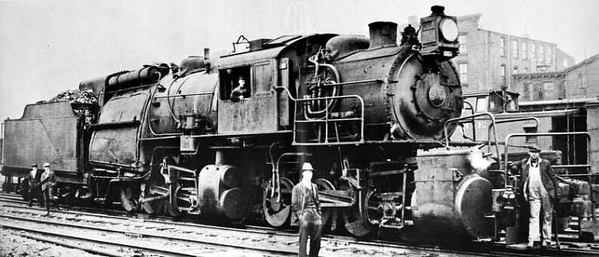
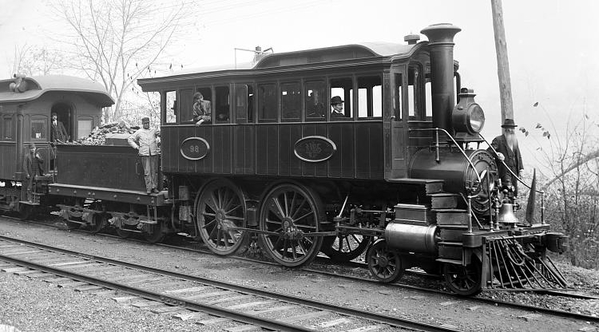

Regards
Fred
Vincent Massi posted:
They must have been experimenting with props; I wonder which one was better for the train. Those photos make me wonder if they ever tried a three-bladed prop. And not to mention that spinning prop unprotected and so close to the platform! Still, I would not mind a reasonably priced true O scale model of it.
PRRMP54 posted:Vincent Massi posted:They must have been experimenting with props; I wonder which one was better for the train. Those photos make me wonder if they ever tried a three-bladed prop. And not to mention that spinning prop unprotected and so close to the platform! Still, I would not mind a reasonably priced true O scale model of it.
The Rail Zeppelin was a 1929 version of the 1966 New York Central Jet Powered RDC-3 M-497. A way a testing the tracks for high speed trains.
Stuart
Vincent Massi posted:
That engine has nothing to do with "passengers." It is more correctly known as an "inspection engine," and it was used by railway officials to inspect the line and on their rounds of business and supervision of the properties.
This has been an interesting thread; some have made disparaging comments about certain locos, yet one wonders how many of those same people bought this thing? ![]()
Mark in Oregon
I might be with Vincent on this one; it looks to me like the ultimate kiddie car of trains. I'd be the envy of the neighborhood...
@Dennis Holler Above is what you need to do with the MTH chassis 😎
Still not an obnoxious enough green to say no Vincent 😋
Palallin, how much to rent a corner in that hotel?🤤
Is this the equivalent of poking me with a stick to see if I still kick or something?😉

The price on Phantoms doubled as soon as I showed interest. I think this was already near done when I learned the Phantom had been made. 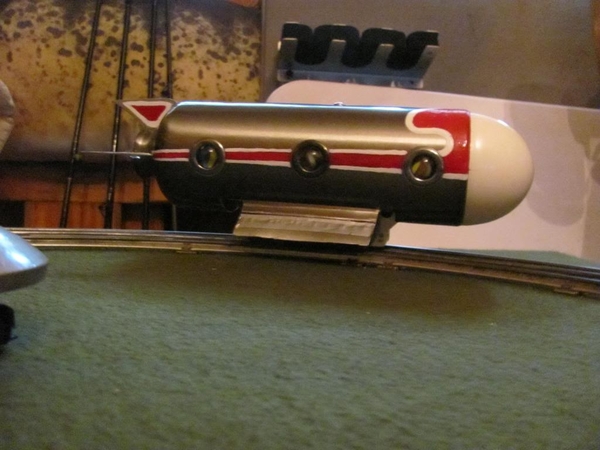
Yes, it's real! A Garratt is a three-segment articulated locomotive. They allow a railroad to put a more powerful locomotive on lighter tracks, and they excel in providing powerful locos on narrow gauge tracks. https://en.wikipedia.org/wiki/Garratt#United_States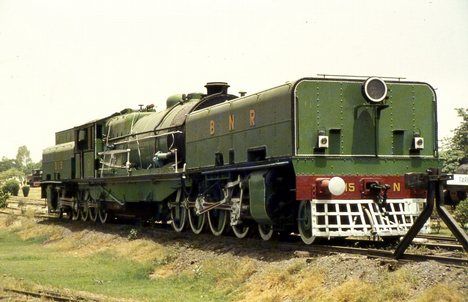
Adriatic posted:Palallin, how much to rent a corner in that hotel?🤤
Passes available to OGR Forum members; just be prepared to shovel some . . . coal.
I read somewhere that Beyer-Garrets were used on every inhabited continent except North America.
PRRMP54 posted:I read somewhere that Beyer-Garrets were used on every inhabited continent except North America.
That's because the Beyer-Garratt offered no advantage over a North American articulated locomotive.
Rusty
Readingfan, that is a beautiful video of a fantastic locomotive!
Incidentally, there is one used Garrett in service in the US on private property. Garratts were rejected by US railroads mainly because they could do better with two locomotives or with already-existing articulated locos.
Rusty Traque posted:
I'd not only buy one, I'm thinking of making this my next scratch building project. I've lined up some drawings and photos, along with photos I took of these units taken a year or two ago.
It would be unpatriotic to refuse. During WW2, the US Army designed 2,120 2-8-0 steam locomotives for the war in Europe. Designed for building efficiency, they had some built-in problems that required extra maintenance, but they served well in Britain before being shipped to continental Europe.
Czechoslovakia removed its last one from service in 1972. Many were modernized, and China retired its last modernized one in 1997.
Vincent Massi posted:It would be unpatriotic to refuse. During WW2, the US Army designed 2,120 2-8-0 steam locomotives for the war in Europe. Designed for building efficiency, they had some built-in problems that required extra maintenance, but they served well in Britain before being shipped to continental Europe.
Czechoslovakia removed its last one from service in 1972. Many were modernized, and China retired its last modernized one in 1997.
USATC 2-8-0 1702 (originally stationed at Fort Bragg, sold to the Reader Railroad in 1964) operates at the Great Smoky Mountain Railroad in North Carolina.
Rusty
Vincent Massi posted:It would be unpatriotic to refuse. During WW2, the US Army designed 2,120 2-8-0 steam locomotives for the war in Europe. Designed for building efficiency, they had some built-in problems that required extra maintenance, but they served well in Britain before being shipped to continental Europe.
Czechoslovakia removed its last one from service in 1972. Many were modernized, and China retired its last modernized one in 1997.
ETS model:

Regards
Fred
Real train, no gauge.
Vincent Massi posted:
Question: "Would I buy a model of this?"
Answer: Where's the "Hell No" button?
![]()
Andre
laming posted:Question: "Would I buy a model of this?"
Maybe Jimmy Durante would. ![]()
laming posted:Vincent Massi posted:Question: "Would I buy a model of this?"
Answer: Where's the "Hell No" button?
Andre
Oh, I don't know... Not a whole lot different than this thing:
![]()
Rusty
From 1901 to 1958, the "Ma & Pa" Railroad ran a successful short-line railroad in Pennsylvania with a line running into Maryland. Using antiquated equipment, it ran a popular passenger line that meandered through scenic mountains. It carried freight and serviced quarries in its area.
It had to abandon its Maryland line, followed by other lines in Pennsylvania. It got bought out and actually purchased a new line afterward. The holding company got bought out, and it was eventually merged into the York Railroad.
Yes, I would definitely buy a model of this beloved railroad. 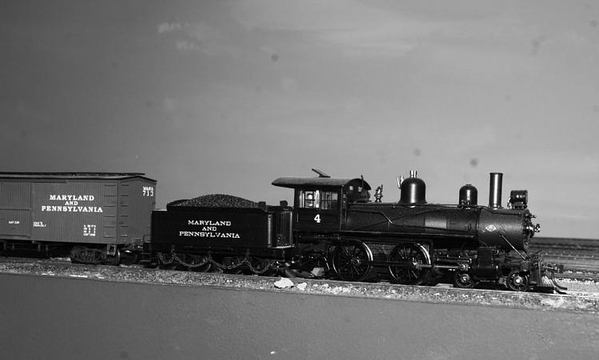
Perhaps it's their first ...
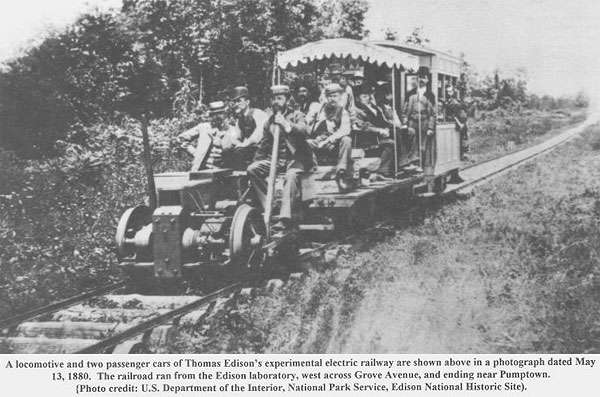
 The photo of the first electric locomotive to enter service got me intrigued. Who invented the electric locomotive?
The photo of the first electric locomotive to enter service got me intrigued. Who invented the electric locomotive?
German inventers had made battery-powered locos in the nineteenth century, but they were rejected due to very short range. And while he did not invent the electric loco, Thomas Edison ran an experimental electric locomotive about 1/3 of a mile in 1880. (Picture 1)
Encouraged by the railroads and the government, he built a bigger line and ran a larger experimental engine on it a few years later. (Picture 2)
The first electrics are credited to Siemens and first fully electrified line was in Italy, running Ganz steeplecaps.
Yep...



Rusty
So we're in the real trains topic and posting pictures of models to ask if we'd purchase a model of it. Something seems incongruous.
16 - 18 inch shell with a passenger and crew. ![]() It would make a neat model.
It would make a neat model.
Guys, I think that putting photos of models in a thread about buying a model of a real piece of railroad equipment is a little silly.
Stuart
Everybody always talks about eliminating the third rail. How about we eliminate the two outside rails?
Rusty
No kidding? The Ma&Pa ran Sykes cars, and right past the classic store/post office/station in Muddy Creek Forks? I'd buy a three rail Sykes...New Haven, etc.,used them... and l have a three railed brass one.
Good Heavens, Byrdie, I thought you were joking, but there really is such a railcar! Over time, the ballast gets rounded, dirt and impurities trapped between the ballast cement together, and other problems reduce the effectiveness of ballast (which allows the track to flex with changing loads).
However, that's not what it is.
But for the record, here is a ballast-cleaning railcar in Israel.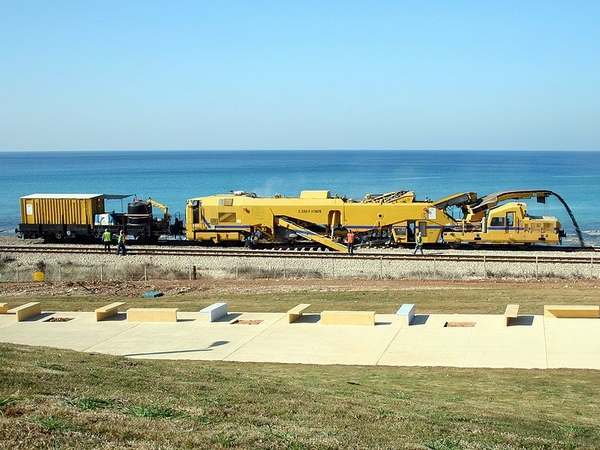
Byrdie posted:
Nope... It's a Schwellenpflug, a device used by the Germans in WWII to tear up the railroads as they retreated.
Here's another one in action:

Rusty
Rusty, you are correct. Used by both sides in WW2, and by Russia in WW1, its use is often considered a war crime, as it destroys civilian infrastructure.
NOBODY wants one of these on their lay-out!
>>its use is often considered a war crime, as it destroys civilian infrastructure.
Not if it was used to tear up government-owned railroads!
From a purely logical standpoint, it would probably be the LAST thing I'd buy!
Vincent Massi posted:Rusty, you are correct. Used by both sides in WW2, and by Russia in WW1, its use is often considered a war crime, as it destroys civilian infrastructure.
NOBODY wants one of these on their lay-out!
War crime?
Source, please.
palallin posted:Vincent Massi posted:Rusty, you are correct. Used by both sides in WW2, and by Russia in WW1, its use is often considered a war crime, as it destroys civilian infrastructure.
NOBODY wants one of these on their lay-out!
War crime?
Source, please.
"Today, the targeted destruction of civil infrastructure is considered a war crime . " https://everipedia.org/wiki/lang_en/Railroad_plough/
UP has another commemorative locomotive. This one pays tribute to their employees. It's an SD70ACe #1111. If MTH does a model with scale wheels, I'm in. The paint seems to also imply a tribute to the steam program. I'll see if I can find more photos.
Vincent Massi posted:palallin posted:Vincent Massi posted:Rusty, you are correct. Used by both sides in WW2, and by Russia in WW1, its use is often considered a war crime, as it destroys civilian infrastructure.
NOBODY wants one of these on their lay-out!
War crime?
Source, please.
"Today, the targeted destruction of civil infrastructure is considered a war crime . " https://everipedia.org/wiki/lang_en/Railroad_plough/
I am looking for an authoritative source, please.
Vincent Massi posted:
K-Line did one years ago. I have one. I'll have to check, but I think MTH also did one. I saw the prototype in El Monte about twenty-five years ago. The bunk area is actually a jail cell.
poniaj posted:Rusty Traque posted:I'd not only buy one, I'm thinking of making this my next scratch building project. I've lined up some drawings and photos, along with photos I took of these units taken a year or two ago.
MTH made them, so you could just buy one of those.
palallin posted:smd4 posted:Kent Loudon posted:And of course, the Russians invented the 4-4-0.
Where did you come up with that little bit of misinformation?
It's a joke, son; it's a joke (the Russians inwented everything first--just listen to Russian history as related by Pavel Chekhov).
I heard that Lionel invented everything first. That's what I was told, anyway. ![]()
That photo of the DD-1 (and the MTH model) show the attempt the LIRR made to "modernize" the units to pull the World's Fair shuttle trains in 1939. Always though it looked better before.
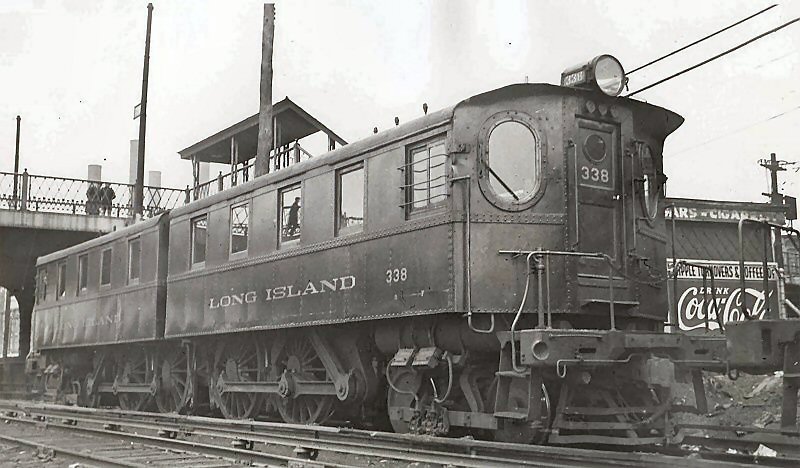
RoyBoy posted:poniaj posted:Rusty Traque posted:I'd not only buy one, I'm thinking of making this my next scratch building project. I've lined up some drawings and photos, along with photos I took of these units taken a year or two ago.
MTH made them, so you could just buy one of those.
But not in S... ![]() If I REALLY wanted "easy", I'd model in HO.
If I REALLY wanted "easy", I'd model in HO.
S really does have more than most folks think, but not the more uncommon items.
Something much like it isn't at all that far fetched though. Not exactly that one, but I'd think the odds are good a similar truck was used somewhere. Way better odds than lotto anyhow 😉
"Critters" on small logging lines were often a mishmash of whatever was available/affordable. Sometimes the tracks were the only roads available, or even passable, during certain times of the year. The little railroads were the only way to get around for some too. I know it's the case in Mich.s U.P. when the cedar swamp lowland areas were too wet from thaws. It doesn't dry up overnight, or even weeks later in that climate.
I can't stand most "square-ish" and "stealth fighter" diesels. A VW Thing / Kublewagen had more styling just in the reinforcement embossing.
I have to force myself to run my 4 or 5 SW/NWs once or twice a year. I only have them for the roadname or cars that came with them. I like the RSs and early high hoods, but thats about it.
The BessIemer logo however, is a great graphic design. So, I'd tolerate that one, but never love it. 😔
The porches and long trucks are pretty cool though.
What exactly are they?; strikes me odd. Like Sesame Street's "one of these things" song should be playing 🤔
Vince, Dr. Doolittle's "PushMe PullYou"!
Dan Weinhold
Did they get the idea from Jersey Central?
Vincent Massi posted:
sleepmac posted:Vince, Dr. Doolittle's "PushMe PullYou"!
Dan Weinhold
Kent Loudon posted:Did they get the idea from Jersey Central?
Dual cab locomotives are popular in the European countries. Most mainline locomotives, both electric and diesel, on the other side of the pond are dual cab.
They even had what are essentially dual cab F-Units "Down Under"
Rusty
Dual cabs went out of style when entire push-pull trainsets became more common.
Kent Loudon posted:Dual cabs went out of style when entire push-pull trainsets became more common.
Passenger trains, maybe. But not freight (or goods trains as the Brits refer to them.)
Rusty
Vincent Massi posted:Certainly. Especially if it works.
MTH offers/offered a Jordan spreader that is quite similar to the one in your photo. I have one that I two-railed (quite easy to do on this model, btw) for later use.
What? You never heard of the Navajo Mine railroad? Its 13.8 mile-long track goes from a coal mine to a power plant, all of them located on a Navajo reservation.
Always at the cutting edge of technology, the railroad started with three diesels, replaced them with electric locos, and two years ago bought three new energy-efficient diesels.
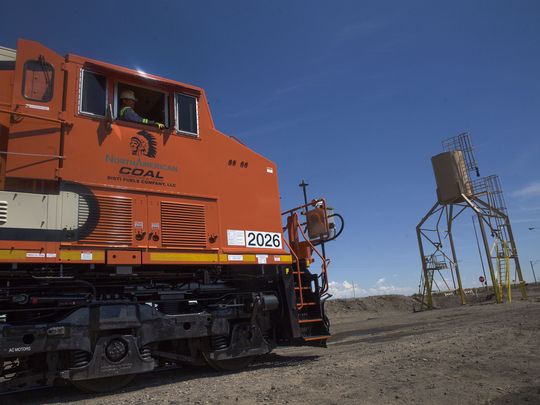
Because it does not connect to any other railroad, its locos and cars had to be brought in by truck.
That structure (sand tower?) in the background looks like giant, menacing mechanical spider. That would be sort of cool to have a model of...
Vincent Massi posted:
What the heck--
If I did purchase one, I would probably follow it with a Pepto-Bismol chaser. It looks like an elephant seal!

After my previous post I decided to research it.
Built in 1939, this loco stayed in service until 1983. Capable of over 100 mph, it became a legend when it crashed into the Washington DC railroad station just before President Eisenhower's inauguration. Its articulated body rested on a frame whose two halves were connected with a ball-and-socket joint. The body itself had steel plates that allowed it to bend with the frame when it went around curves.
Donated to the B&O Railroad Museum, it currently rusts outside due to financial problems.



I think we've seen this particular JNR Class C62 Hudson at one point in our lives. I'd buy one if it ever appeared in the O-Gauge market.
Rusty Traque posted:Vincent Massi posted:sleepmac posted:Vince, Dr. Doolittle's "PushMe PullYou"!
Dan Weinhold
Kent Loudon posted:Did they get the idea from Jersey Central?
Dual cab locomotives are popular in the European countries. Most mainline locomotives, both electric and diesel, on the other side of the pond are dual cab.
They even had what are essentially dual cab F-Units "Down Under"
Rusty
Engines like this are a lot like some people...they go both ways.
Vincent Massi posted:
Pretty sure you've misinterpreted what has been written. the GG1 body/shell is a solid fabrication. The nose(s) overhangs a bit when going thru curves. The ball and socket part of the frames joint description is spot on.
Finally! I understand why candy companies don't advertise on railcars! We all know that high-quality foods (such as Nestle's candy) are packaged in a clean, safe manner. But this dirty railcar will make a bad impression on people.
Researching the web, it appears that Nestle's really did have at least one boxcar. A few people report seeing one, but nobody reports more than one. Model train manufacturers have made several models in different gauges but all of the real ones were white.
Vincent Massi posted:
DJH makes a HO scale kit. I built one years ago and it ran fine, except only the read mechanism was powered.
https://www.djhmodelloco.co.uk...e.asp?productid=3192
Stuart
p51 posted:
I agree the Pennsy livery looks great!! Modern AMTRAK loco designs do not interest me, however, this paint scheme really makes the locomotive much more visually appealing IMHO!
This livery strikes me as dignified, in the same way as WWII-era military dress uniforms. On the other hand, the Amfleet cars have the dignity of a Campbell soup can.
Vincent Massi posted:
Not the same model, but you can get an o gauge beyer-garret from ETS
While many such engines where built from 2’ gauge to South African “cape gauge”, to meter gauge to even over 5’ wide gauge, not that many were standard gauge. That being said, our friends Down Under has a few... Check out this Aussie Loco
Here’s a company flyer. Used almost everywhere but the U S of A
I had gotten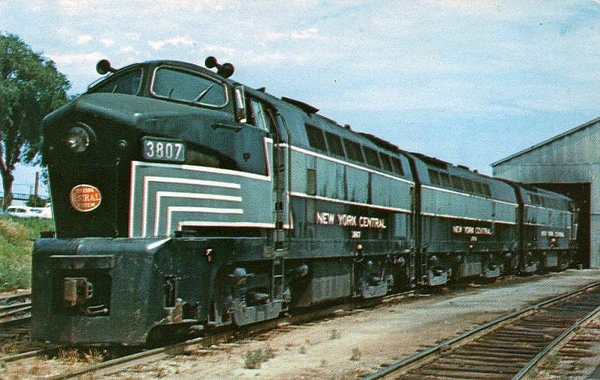 interested in “sharks,” often called “sharknose” diesels.
interested in “sharks,” often called “sharknose” diesels.
The PRR designed three types which were built by Baldwin from 1945 to 1953. They then built various improved models within those three types. The sharknose design was done to distinguish them from competitors and from earlier less-successful diesels.
Although the PRR was the primary purchaser, other railroads, including Soviet Railways, bought some. The last two went out of service in 1981.
Vincent Massi posted:I had gotten
interested in “sharks,” often called “sharknose” diesels.
The PRR designed three types which were built by Baldwin from 1945 to 1953. They then built various improved models within those three types. The sharknose design was done to distinguish them from competitors and from earlier less-successful diesels.
Although the PRR was the primary purchaser, other railroads, including Soviet Railways, bought some. The last two went out of service in 1981.
SAY WHAAAA????
The RF16 was designed and built by the Baldwin-Lima-Hamilton Locomotive Works. While the "Sharknose" design may have been influenced by the Pennsy T1, the Pennsy didn't design them.
Pennsylvania, New York Central, Baltimore & Ohio and Elgin, Joliet & Eastern (ex-RF16 Demo's) were the only buyers. Monongahela Railway bought seven A's and two B's RF16's second hand from the NYC and Delaware & Hudson bought two A's from the Monongahela.
None went to Russia.
Rusty
The Sharknose was designed by Raymond Loewy.
Baldwin 2-6-2t?
Bought for and used in France for WW1, then used stateside in various places after the war for the Army and various civilian owners later.
Bachmann is coming out with an On30 model of this, just got announced.
HECK YES, I'll be buying one! I've been hoping for a good kit for one of these, but Bachmann making a RTR one is more than I could have hoped for.
I have an Army RR Operating unit on my layout which takes place in 1943. They were still using these at that point stateside and it'll make a lot more sense than the 50-tonner Whitcomb (which did exist at that time but unlikely would be used by a training unit) that I have right now for their use...
Vincent Massi posted:
http://freedomtrain.org/freedo...-locomotive-1776.htm
My Dad got to see the train in Johnson City, TN when he was 12: https://www.freedomtrain.org/f...-johnson-city-tn.htm
He then got to see the 1975-76 version in Florida near the end of it's run before Thanksgiving 1976. I saw the 4449/bicentennial version just before my 7th birthday and remember it like it was yesterday!
Vincent Massi posted:Baldwin Locomotive only built four of these magnificent C-16 dockside switchers. Model railroad companies manufactured thousands of them.
Thousands? I would say hundreds of thousands, maybe even millions! ![]() Even that paragon of importers, International Models, did it in O; I even have one. I suspect the only model that exceeds the production quantities of the C-16 is the Globe/Athearn F7!
Even that paragon of importers, International Models, did it in O; I even have one. I suspect the only model that exceeds the production quantities of the C-16 is the Globe/Athearn F7!
Four different versions of these 42 beauties were manufactured from 1926 to 1935, with Pennsylvania Railroad buying all of them. Three of the versions were designed to be used in pairs, but as improvements were made over the decades, all of them were eventually used singly.
I can't find out when they went out of service, but Penn Central inherited some in 1968. The only survivor is in a museum. 

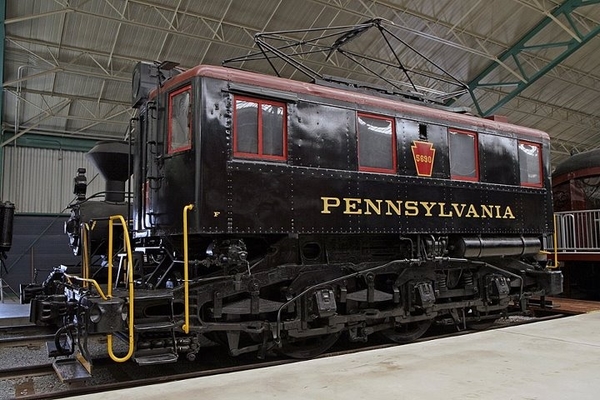
There really was such a device, made from left-over parts. The motor sits on top of the chassis and uses a worm drive to connect to the wheels underneath the chassis. You cannot see the worm drive because the wheels are blocking your view.
It SEEMS to be using the truck's motor. But in that case, why not simply attach railroad wheels to the truck and use it as a locomotive? It is also possible that a more powerful motor was used, and the truck body merely covered the motor.
Obviously, the device was impractical, but it really did run, serving a wood chemical plant in Pennsylvania.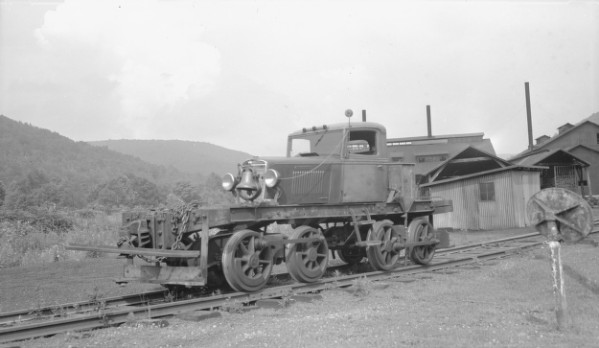
A total turn-off. Back when locos of this type were common, they were brightly painted kept in pristine condition. In general, an engineer was assigned a locomotive and it was his responsibility, and a matter of personal pride, to keep it looking good! (Sort of like my Dad and his car.)
Kent Loudon posted:A total turn-off. Back when locos of this type were common, they were brightly painted kept in pristine condition. In general, an engineer was assigned a locomotive and it was his responsibility, and a matter of personal pride, to keep it looking good! (Sort of like my Dad and his car.)
Correct. Even during the Civil War locomotives didn't look that bad. Nashville 1864:
Even this one which sustained damage:
Locomotives going to scrap didn't look as bad as the movie prop locomotive:
Rusty
Kent Loudon posted:This livery strikes me as dignified, in the same way as WWII-era military dress uniforms.
Did you know the WW2 uniform style is coming back for the US Army? Why didn't they do this when I was still active duty?
I know it's way off subject, but I couldn't resist..
Vincent Massi posted:
What movies or shows has this thing been in? I know the **** on Wheels and Lone Ranger movies had mock-ups, but this isn't either of those, and I can't think of any other movies that used to Makkah. Frankly, this one actually is very well made.
How would you like to own this beauty?
Not Lois Lane, you knucklehead (Her boyfriend is standing right there). I'm talking about the 1950 Nash Rambler.
 Over time, they "upgraded" Lois Lane's car with modifications to keep it looking like a new model.
Over time, they "upgraded" Lois Lane's car with modifications to keep it looking like a new model.
It sold for $25,500 in a 2017 auction. It got a higher price than some older, scarcer cars because, well, Lois Lane used to own it.
Vincent Massi posted:How would you like to own this beauty?
Not Lois Lane, you knucklehead (Her boyfriend is standing right there). I'm talking about the 1950 Nash Rambler.Over time, they "upgraded" Lois Lane's car with modifications to keep it looking like a new model.
It sold for $25,500 in a 2017 auction. It got a higher price than some older, scarcer cars because, well, Lois Lane used to own it.
Great, now you've got me thinking of the song "Beep, Beep."
Stuart
"How do you get this car out of second gear?"
PRRMP54 posted:"How do you get this car out of second gear?"
Ask Lois.
And speaking of Lois Lane, how do you explain the fact that you always beat her 

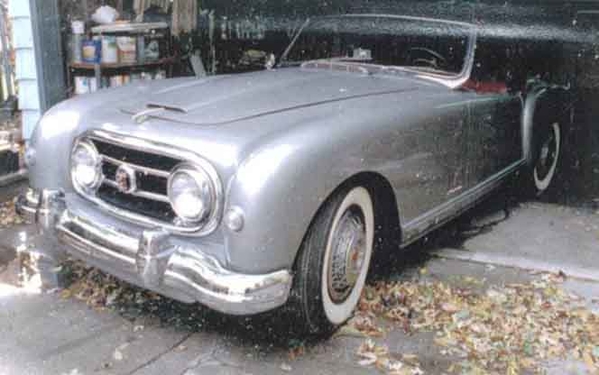 to the scene of the crime? Why, you buy a 1953 Nash Healey convertible!
to the scene of the crime? Why, you buy a 1953 Nash Healey convertible!
America's first post WW2 sports car, it was expensive and fast. Its luxury interior actually included (Get this!) a built-in cigarette lighter!
Vague records tell us that actor Dick Powell actually owned the car, and he lent it to the Superman TV show for four scenes (in four different episodes). It APPEARS that the car was rented to different studios and appeared in at least one movie. It went through a variety of owners who may not have realized what it was. The current owner found it in poor condition and has restored it.
A drovers' caboose?
Cattle had to be allowed out of the railcars at regular intervals to exercise, drink, etc. The cattle handlers rode in drovers' cabooses which were sometimes put in the middle of the cattle cars so they could keep a better eye on things.
Often built from old passenger cars or boxcars, some of them were specially built from the ground up. Drovers' cabooses included sleeping and eating facilities. 


The Peacekeeper Rail Garrison is a mobile missile system that was developed by the United States Air Force during the 1980s as part of a plan to place fifty MGM-118A Peacekeeper[1] intercontinental ballistic missiles on the rail network of the United States. The railcars were intended, in case of increased threat of nuclear war, to be deployed onto the nation's rail network to avoid being destroyed by a first strike counterforce attack by the Soviet Union. However the plan was cancelled as part of defense cutbacks following the end of the Cold War, and the Peacekeeper missiles were installed in silo launchers as LGM-118s instead. 
Vincent Massi posted:The Peacekeeper Rail Garrison is a mobile missile system that was developed by the United States Air Force during the 1980s as part of a plan to place fifty MGM-118A Peacekeeper[1] intercontinental ballistic missiles on the rail network of the United States. The railcars were intended, in case of increased threat of nuclear war, to be deployed onto the nation's rail network to avoid being destroyed by a first strike counterforce attack by the Soviet Union. However the plan was cancelled as part of defense cutbacks following the end of the Cold War, and the Peacekeeper missiles were installed in silo launchers as LGM-118s instead.
My brother was a silo-based Peacekeeper ICBM launch officer and in the 90s, I got to go down into a LCC to see the launch control for ten missiles (each missile with ten Re-entry Vehicles, over 300 kiloton yield per RV). Very sobering.
We went out back at F E Warren AFB where the Rail Garrison facility was going to be built. Trains would take to the UP main at Cheyenne. He'd been told by contractors that the real missile trains would never take to the high iron unless they would be likely to launch them. They were using the by-then-defunct ground launched cruise missiles (tomahawks from trucks) play book as they never left their alert facility in peacetime either with nukes aboard.
The trains, I was told, were to be painted in real railroad markings, including weathering done with paint. Nobody connected could answer how they intended to fool train fans or RR employees, but this was the pre-internet era where by the time you heard about it, the nuclear war would have long already happened or the crisis was long over without going nuclear and the missiles were back in their facility.
The above car is at the USAF museum, the only surviving example of a transporter car, where the missile would rise out of the car and launch directly from it. Clearly, recovering the trains after launch was not a priority (as they'd be knocked off the tracks when the missile left) and I assume the crews were told once they launched, they were on their own?
I would.
rdg_fan posted:I would.
Ditto
Access to this requires an OGR Forum Supporting Membership
